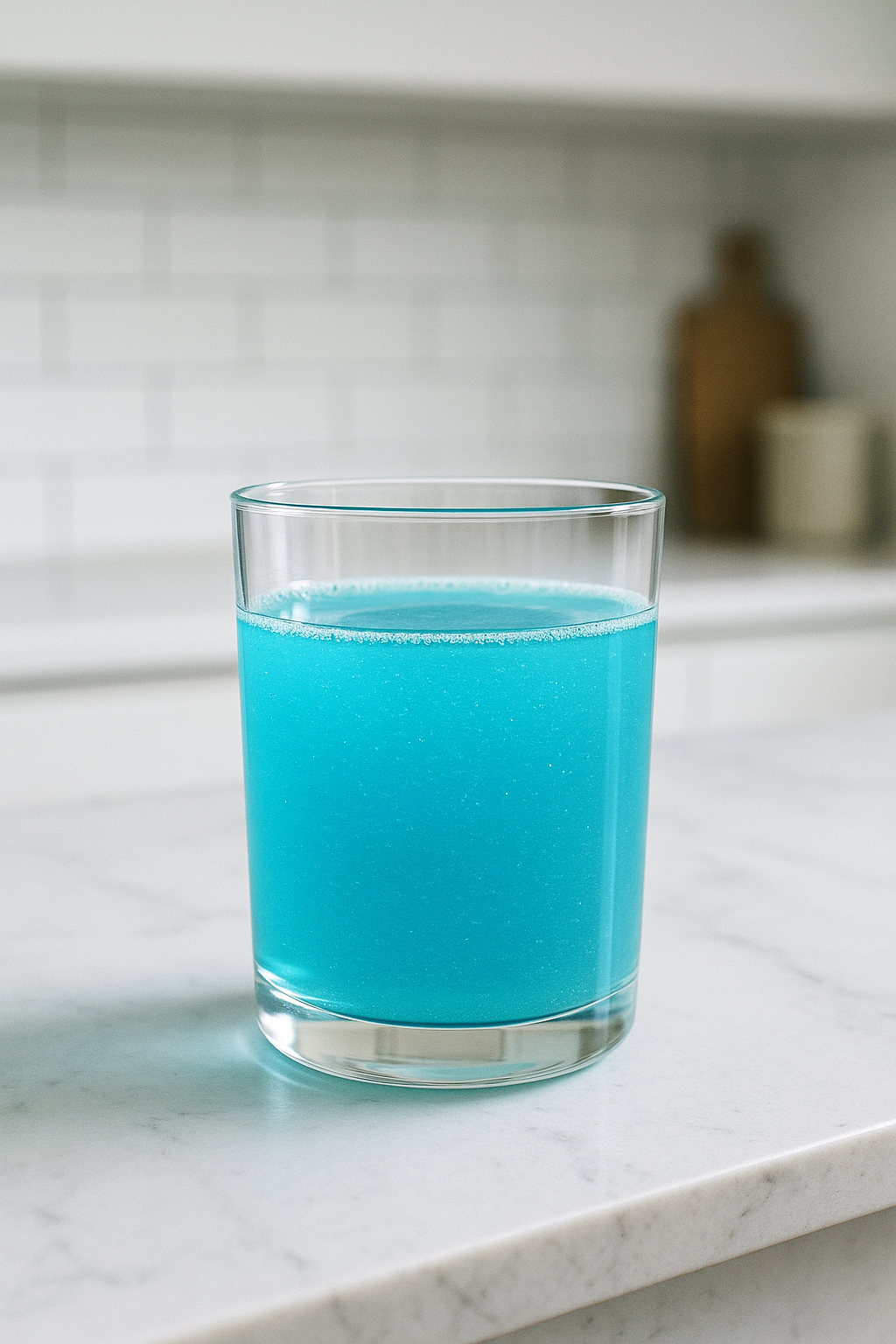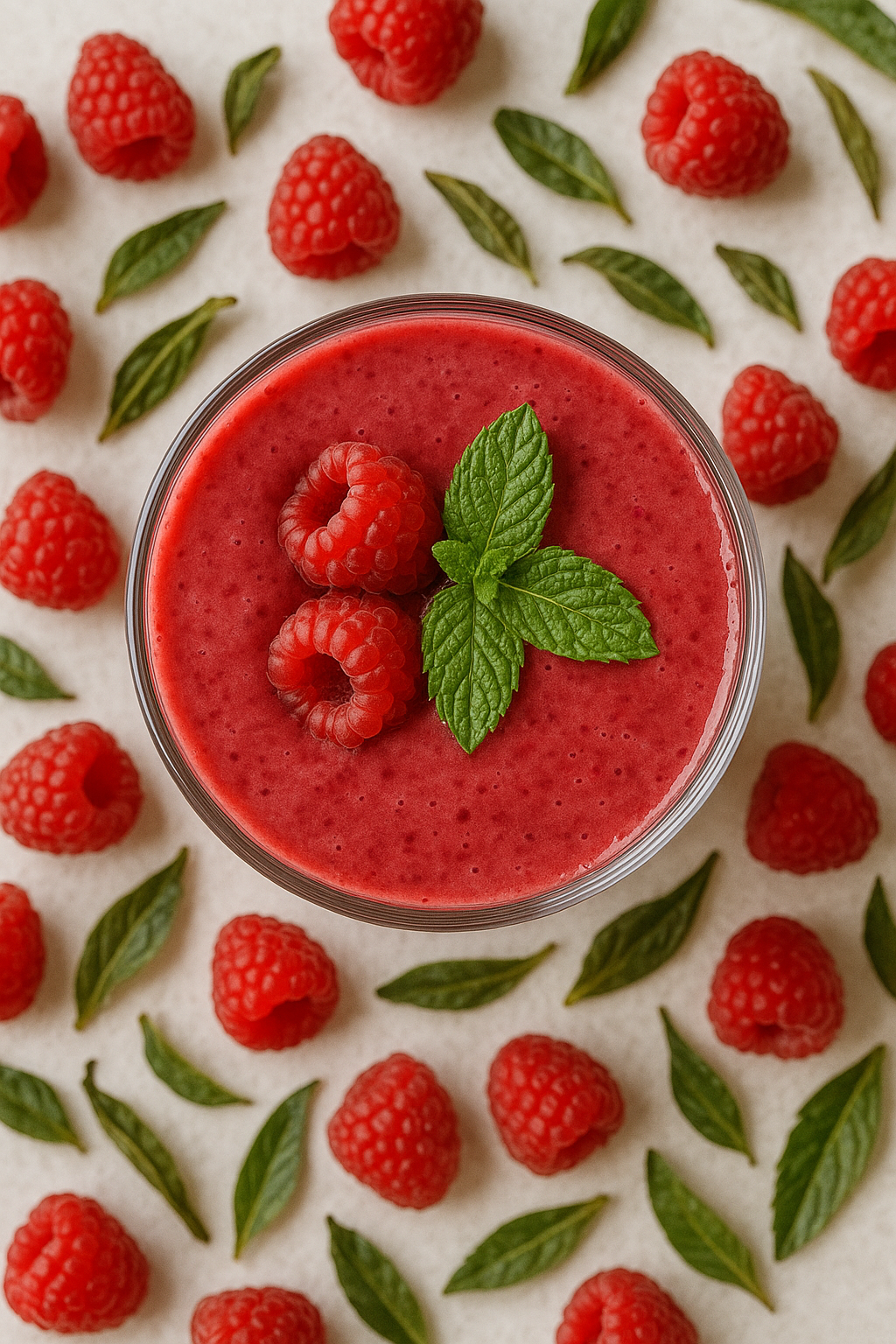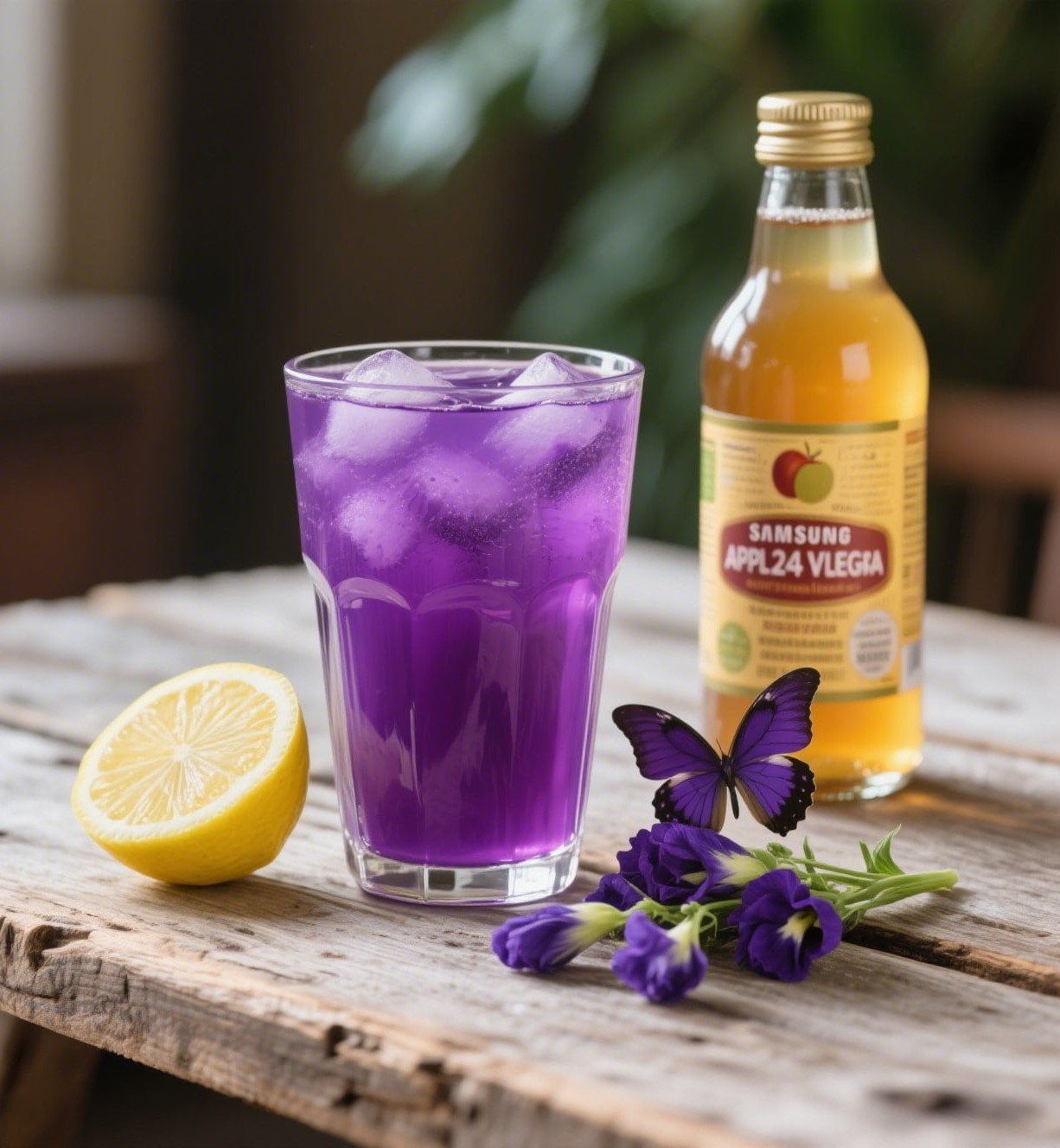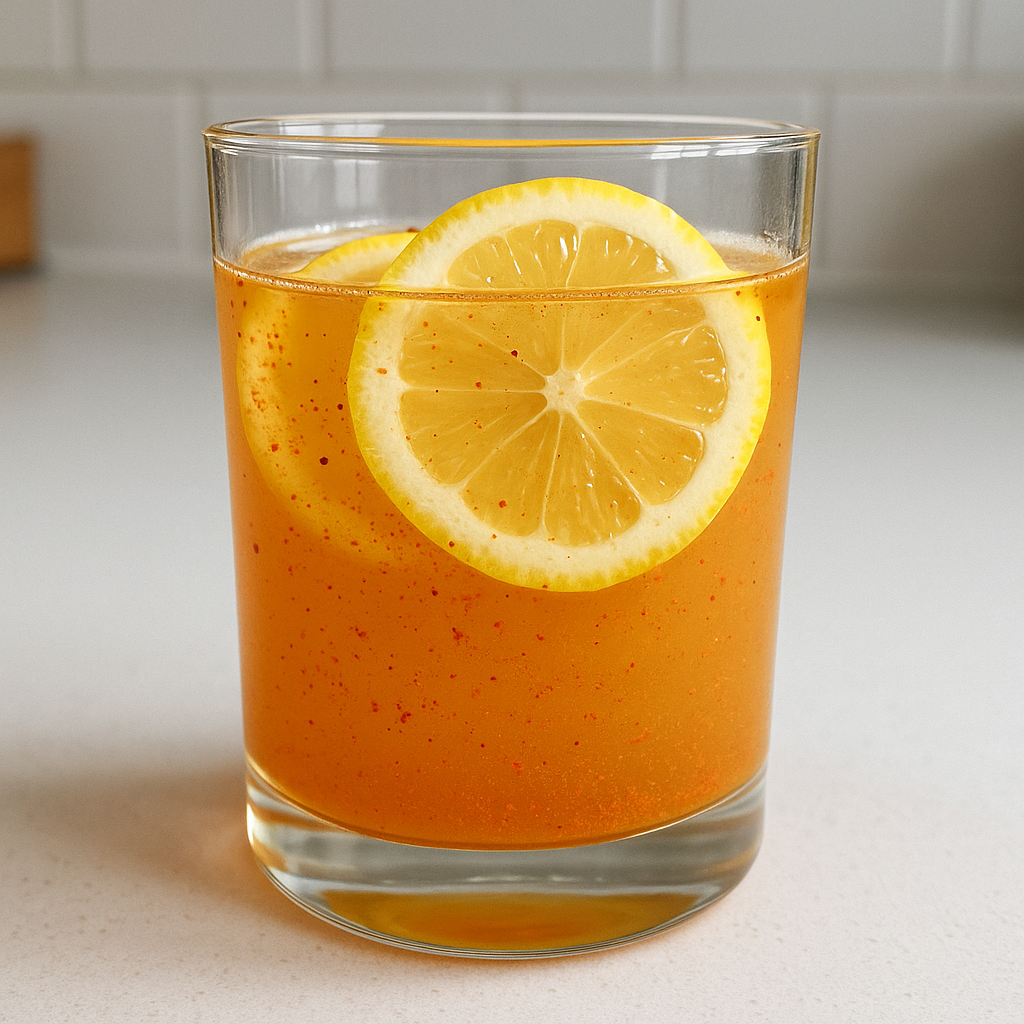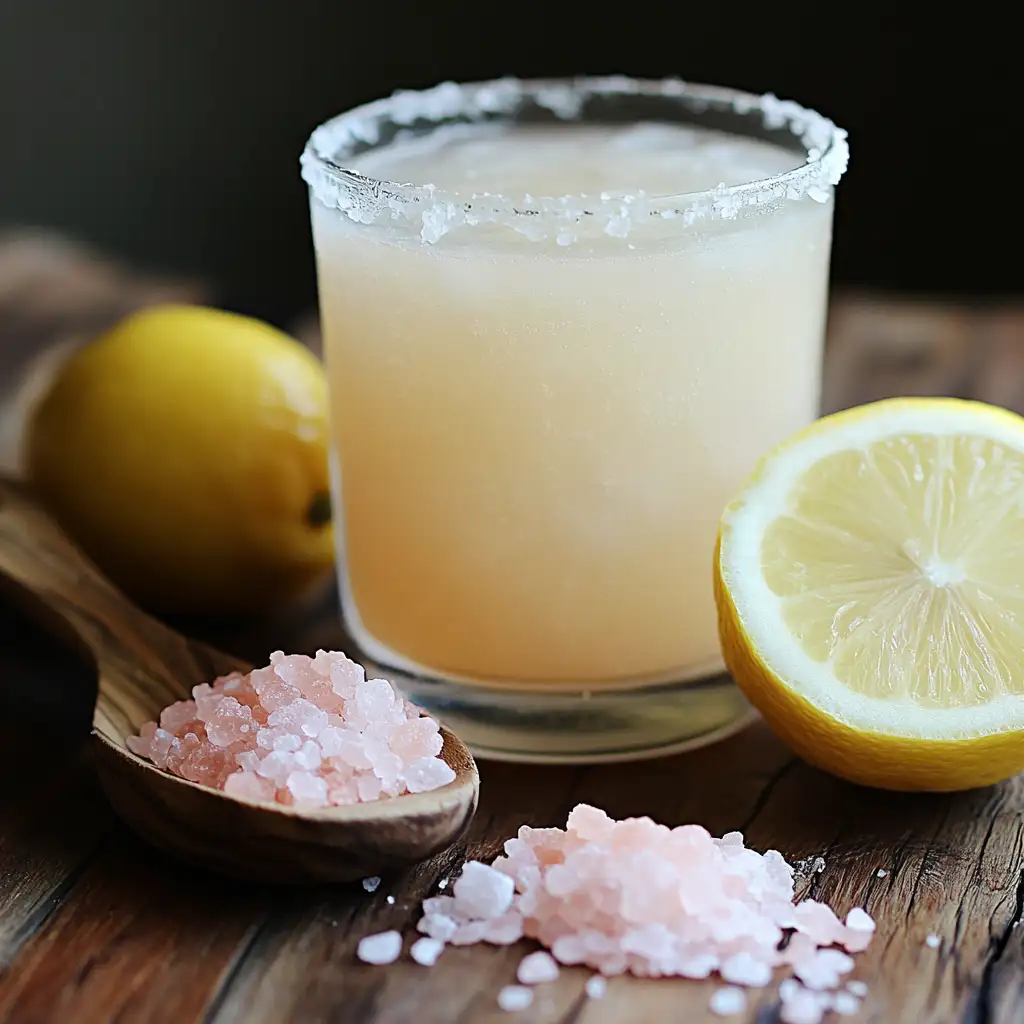In the ever-evolving world of internet health trends, few hacks have gained traction as quickly as the blue salt trick. You’ve probably seen it scroll past on TikTok, or maybe a YouTube influencer swears it changed their life. With promises of detoxing your body, aiding weight loss, and even balancing your pH levels, this brightly colored beverage has sparked both curiosity and skepticism. But the real question remains—does the blue salt trick really work, or is it just another viral fad riding the social media wave?
In this article, we’ll break down the facts versus the hype. We’ll examine its ingredients, claims, side effects, and what science (if any) has to say about it. We’ll also explore why it has gone viral and feature real-life user experiences. If you’re wondering whether to give the blue salt method a try or avoid it altogether, this guide is your ultimate fact-checking companion.
Don’t miss our Power of Natural Mounjaro Recipe to discover other trending wellness tricks.
What is the blue salt trick and why is it trending?
The blue salt trick refers to a viral health trend that involves mixing a specific type of salt—often Himalayan pink salt or sea salt—with blue spirulina powder in water. Sometimes lemon or apple cider vinegar is added. When stirred, the concoction turns a vibrant blue and is consumed as a wellness tonic, often first thing in the morning.
This trick has gained massive popularity online due to claims that it boosts energy, aids in digestion, detoxifies the body, and supports weight loss. Users often post videos showing their morning routines with the striking blue drink, reporting reduced bloating and better focus.
But what really pushed this trend into the spotlight is how visual it is. The vivid blue color is eye-catching, making it ideal for viral content. From aesthetically pleasing TikToks to motivational wellness vlogs, the blue salt drink has become a social media star.
The viral origin: TikTok & YouTube phenomena explained
It all started with short, snappy TikTok videos that showcased people trying the drink with captions like “I drank blue salt water for 7 days—here’s what happened.” Influencers praised its supposed ability to flush out toxins, clear skin, and kickstart metabolism. Before long, millions of users were replicating the trend.
On YouTube, holistic health channels began breaking down the potential benefits, often tying in scientific-sounding language about “alkalizing the body” or “restoring electrolyte balance.” Whether or not these claims are rooted in peer-reviewed science, the message resonated with health-conscious viewers.
Looking for inspiration? Try our Chia Seeds Recipe Water for another nutrient-packed daily boost.
What’s clear is that the blue salt trick is not just about health—it’s a social media movement that taps into people’s desire for quick, visual, and supposedly powerful health hacks.
Is there scientific backing for the blue salt method?
When something goes viral, it’s natural to ask—is there any science behind this? Unfortunately, the answer is murky. While the individual components of the blue salt trick—like sea salt, spirulina, and lemon—each have some scientific merit, the combined “blue salt detox” hasn’t been formally studied in peer-reviewed research.
Sea salt or Himalayan salt, when dissolved in water, can help with hydration due to its electrolyte content. Spirulina, the ingredient responsible for the brilliant blue hue, is a blue-green algae known for its high protein and antioxidant properties. But mixing them into one drink and labeling it a “miracle detox” lacks the kind of scientific rigor we need to validate its broader health claims.
Furthermore, “detoxing” is a buzzword often misused. The human body already has a powerful detox system—your liver and kidneys. Drinking blue salt water isn’t going to “flush” your organs in a magical way.
However, the drink may act as a mild electrolyte replenisher, especially for those who aren’t consuming enough sodium, magnesium, or potassium in their diets. In that context, it might improve energy levels and hydration, especially after workouts or fasting—but this doesn’t make it a miracle solution.
Electrolytes, Himalayan salt & blue spirulina: fact or fad?
Let’s take a closer look at the core ingredients:
| Ingredient | Supposed Benefit | Scientific Support |
|---|---|---|
| Himalayan Salt | Electrolyte balance, pH regulation | Contains trace minerals, but minor impact |
| Blue Spirulina | Antioxidant support, energy boost | Backed by studies for its antioxidant content |
| Lemon Juice | Detox, metabolism boost | Provides vitamin C; limited detox evidence |
| Filtered Water | Hydration aid | Scientifically proven to aid all body systems |
Blue spirulina (phycocyanin extract) is one of the most legitimate health-based additions to the drink. Research shows it can support immune function and reduce oxidative stress. However, the dosage in a single “blue salt” drink may not be enough to yield noticeable benefits.
Himalayan salt does contain over 80 trace minerals, but most are in such small quantities they likely don’t make a substantial difference to daily health. The real benefit comes from the sodium and small magnesium content, which may support hydration in those prone to electrolyte imbalance.
It’s important to remember that combining beneficial ingredients doesn’t guarantee a beneficial outcome. Think of it like mixing all your vitamins into one drink—it doesn’t make it a cure-all.
Discover great ideas like our Raspberry Green Tea Smoothie for another antioxidant-rich beverage backed by nutrition science.
In short, while each ingredient offers some degree of benefit, the claim that the blue salt trick is scientifically proven to detox your body or drastically boost weight loss is, as of now, not backed by clinical studies.
Claims around fat burning and toxin elimination
One of the boldest claims made about the blue salt trick is that it promotes rapid weight loss and acts as a full-body detoxifier. Influencers and alternative wellness enthusiasts often claim that drinking the blue salt solution in the morning “cleanses the digestive system,” “flushes out belly fat,” or “kickstarts metabolism.”
But let’s be real—weight loss isn’t that simple. There’s no magic potion that melts fat overnight. While blue salt water may help reduce bloating or water retention, that doesn’t equal actual fat loss.
Here’s what’s likely happening when people claim to feel “lighter” after drinking blue salt water:
- Improved digestion: Salt water may mildly stimulate the digestive system, encouraging bowel movements.
- Reduced bloating: If you’re low on electrolytes, a balanced salt drink can help your body better manage water retention.
- Placebo effect: When we expect a positive result, we’re more likely to perceive one—even if the actual effect is minor.
True fat loss comes from a calorie deficit, exercise, and lifestyle changes—not from a brightly colored morning drink. That said, when used alongside a healthy diet and hydration habits, the drink might offer minor support to someone already trying to lose weight.
Expert opinions on blue salt detox benefits
Medical experts tend to be skeptical about “detox drinks” in general. According to registered dietitians and functional medicine practitioners, the human body has no need for external detox aids unless facing specific medical conditions.
Here’s what professionals say:
- Dr. Amy Myers, a functional medicine MD, notes that while spirulina and sea salt have beneficial nutrients, “detox drinks” are not a substitute for healthy organs.
- Registered dietitian Keri Glassman says that “saltwater flushes” may offer temporary relief from bloating but should not be used for weight management long-term.
- The Cleveland Clinic warns against overconsuming salt mixtures, which can raise sodium levels and possibly harm kidney or heart function over time.
So, is blue salt helpful for detox or weight loss? Not in the way it’s advertised. It may assist with temporary water balance or digestion, but it’s no replacement for structured health habits.
Check out our 50 Home Cooks Perfect Burger Guide for an honest food journey that doesn’t skip nutrition for trends.
What exactly is in the blue salt recipe?

The blue salt trick recipe isn’t standardized, but most viral versions feature a mix of a few core ingredients. Each one plays a role in making the drink visually stunning and supposedly beneficial.
Here’s a breakdown of the typical blue salt mixture:
- 1/2 tsp Himalayan pink salt or sea salt
- 1/4 tsp blue spirulina powder
- 1/2 lemon (juiced)
- 8–12 oz filtered water
- (Optional: 1 tsp apple cider vinegar or a pinch of magnesium powder)
Once blended, the result is a visually vibrant blue drink that’s both hydrating and loaded with trace minerals—at least, that’s the claim.
The appeal is twofold: visual impact and functional wellness. The aesthetic draws viewers in, and the perceived health benefits keep them interested.
Key ingredients overview: salt, spirulina, lemon, water
Each ingredient is included for a specific reason. Let’s explore the alleged function behind each and how it contributes to the drink’s popularity.
| Ingredient | Purpose/Claimed Benefit | Reality Check |
|---|---|---|
| Himalayan Salt | Balances electrolytes, improves hydration | Contains sodium, magnesium, calcium—but in tiny doses |
| Blue Spirulina | Adds antioxidants, fights inflammation, gives blue color | Scientifically backed for antioxidant content |
| Lemon Juice | Detoxification, boosts metabolism, alkalizes the body | Vitamin C-rich, mild digestive support, no “alkalizing” magic |
| Water | Hydration, supports cellular function | Absolutely essential—undeniably beneficial |
| Apple Cider Vinegar (optional) | Aids digestion, supports metabolism | Limited evidence, but may improve gut health slightly |
Blue spirulina is the most visually dramatic and nutritionally interesting element. Derived from algae, it’s rich in phycocyanin—an antioxidant compound known to support immunity and reduce oxidative stress.
Salt, particularly Himalayan pink salt, is touted for its trace minerals. While it does contain them, most are in negligible amounts. Its primary function in this recipe is to replenish sodium and help balance fluid levels in the body—similar to a basic electrolyte drink.
Lemon juice, often included to “cleanse” or “alkalize,” is frequently misunderstood. Lemons are acidic, but once metabolized, they may have a mildly alkalizing effect. More importantly, they add flavor and a boost of vitamin C.
Discover great ideas like our Raspberry Green Tea Smoothie for another antioxidant-powered drink you can actually enjoy every day.
Together, these ingredients can offer a light, refreshing way to start your day—but only as a complement, not a cure-all.
How much blue salt water is safe to drink?
The buzz around the blue salt trick makes it tempting to drink it daily, but safety should always come first. Like any health trend, moderation is key—especially when it comes to salt intake.
The most commonly recommended dosage floating online is:
- Once per day, in the morning, on an empty stomach.
- No more than 1/2 tsp of salt per 8–12 oz glass of filtered water.
Why the limit? Because excess sodium can lead to water retention, elevated blood pressure, and electrolyte imbalances—particularly if you’re already consuming a high-sodium diet.
The average adult requires about 1,500–2,300 mg of sodium per day. That’s roughly one teaspoon of table salt total. Drinking blue salt water in addition to regular meals may push some people over that threshold without realizing it.
For people with kidney issues, heart disease, or high blood pressure, consuming salty drinks—even naturally sourced ones—can be risky. Always consult with a healthcare provider if you’re unsure.
Side effects, warnings, and precautions
Despite its trendy status, the blue salt trick isn’t without potential drawbacks. If consumed improperly or too frequently, users may face some unpleasant side effects, including:
| Possible Side Effects | Cause |
|---|---|
| Bloating or puffiness | Too much salt → water retention |
| Nausea or stomach cramps | Spirulina or ACV sensitivity |
| Diarrhea or dehydration | Overuse of salt → electrolyte imbalance |
| Increased blood pressure | Excess sodium intake |
| Allergic reaction | Spirulina (rare, but possible) |
There are also questions around spirulina safety. While generally recognized as safe, it’s important to source it from a reputable brand. Poorly sourced spirulina may be contaminated with heavy metals or harmful bacteria.
Here are a few usage tips to minimize risks:
- Start with small quantities, especially if you’re new to spirulina or salt water drinks.
- Stay hydrated throughout the day—don’t rely on one drink to meet hydration needs.
- Avoid drinking it multiple times a day or combining with other electrolyte drinks.
Learn more about balanced hydration with our Chia Seeds Recipe Water, another trending yet nutrient-rich drink.
So, is blue salt water safe every day? Possibly—for healthy adults in moderation. But it’s not advisable long-term without medical guidance.
Testimonials from users online
If you’ve scrolled through TikTok or YouTube lately, you’ve probably seen testimonials from people swearing the blue salt trick changed their lives. These personal stories usually fall into two categories: glowing successes or complete busts.
Let’s look at the success side first.
Users commonly report:
- Less bloating within 2–3 days of starting
- A noticeable energy boost, especially when consumed in the morning
- Better digestion and more regular bowel movements
- A sense of “feeling clean” or detoxed
Some content creators even pair the drink with intermittent fasting or low-carb diets, crediting the combo with dramatic changes in weight and mood.
One user on TikTok stated:
“After drinking the blue salt water for a week, my digestion feels amazing and I’ve lost 3 pounds—no other changes to my diet.”
While these testimonials are certainly interesting, we must acknowledge the power of perception. Feeling better doesn’t always mean it was caused by one drink.
Blue salt trick before-and-after results: placebo or powerful?
On the other side, not everyone gets results. For every viral success video, there are plenty of comments and reviews like:
- “Tried it for 10 days. No difference at all.”
- “Made me feel sick and didn’t help my digestion.”
- “The taste was awful—couldn’t stick with it.”
Here’s the truth: just because something works for one person doesn’t mean it’ll work for everyone. Much of the impact may be from the placebo effect—expecting a result and therefore perceiving improvement.
Let’s also not forget that people often start new health habits (like better sleep, more water, or cleaner eating) at the same time they try viral hacks. That combination makes it hard to isolate the real effect of the drink itself.
Ultimately, the results are mixed and highly individual. There’s no universal proof that the blue salt trick works, but there’s also no universal evidence that it’s useless. It’s not magic—but if it helps you drink more water and feel good? It might be worth a try.
Where did blue salt come from?
The exact origin of the blue salt trick is a bit of a mystery, mostly because it didn’t come from a scientific study or ancient wellness practice—it was born online. Most sources point to its rise through TikTok influencers and health-conscious YouTubers experimenting with visually appealing drinks.
However, while the specific combination of blue spirulina and salt in water is new, colored salts and mineral elixirs have long-standing roots in different cultures:
- Himalayan pink salt has been used in Ayurvedic practices for centuries to balance electrolytes and aid digestion.
- Blue spirulina, derived from blue-green algae, was a superfood consumed by Aztecs and early African cultures in the form of dried spirulina cakes from lakes.
- The idea of mixing salt into water as a morning tonic has existed for years, especially in detox and alternative health circles.
So while the blue salt trick itself is a modern mashup, its ingredients are steeped in natural health history. The combination is new—but the parts aren’t.
Historical use of colored salts in traditional medicine
Colored salts like black salt, pink salt, and red Hawaiian salt have been part of various traditional medicine systems. In Ayurveda, black salt (Kala Namak) is used to stimulate digestion. Pink Himalayan salt is thought to help with energy and respiratory issues.
What’s unique about blue salt is that the color doesn’t come from the salt itself—it comes from blue spirulina, a pigment-packed extract. Spirulina wasn’t traditionally used in Indian or Chinese medicine, but it has ancient roots in:
- Mesoamerica, where the Aztecs harvested spirulina from Lake Texcoco
- Chad, Africa, where locals still harvest spirulina from natural lakes as a dietary staple
In modern wellness culture, these ingredients are rebranded and recombined to appeal to a broader audience—often more for their visual effect and marketability than their cultural significance.
It’s worth noting that this cultural blending can be controversial. Critics argue that ancient wisdom is being diluted into TikTok trends, while supporters believe it helps spread global wellness practices.
Regardless, it’s clear that the blue salt trick isn’t just about health—it’s about visual storytelling and digital-age reinvention of older ideas.
Common myths debunked
As the blue salt trick gains momentum online, so do the myths surrounding it. While the vibrant color and viral appeal fuel interest, misinformation often follows. Let’s bust the most popular misconceptions.
Myth 1: Blue salt flushes out toxins from your liver.
This is a big one. Despite claims, there is no scientific evidence that drinking blue salt water detoxes the liver. Your liver and kidneys naturally process toxins—they don’t need help from a trendy beverage.
Myth 2: It alkalizes your body.
“Alkaline” health trends suggest that certain foods or drinks can alter your body’s pH levels to prevent disease. However, your blood pH is tightly regulated by your body. No food or drink—blue salt included—can meaningfully change it.
Myth 3: It burns belly fat.
Let’s be clear: no drink burns fat. At best, blue salt water may help reduce bloating, making you feel slimmer. But fat loss comes from consistent calorie deficits, not spirulina and salt.
Myth 4: It provides all the minerals your body needs.
While Himalayan salt and spirulina contain trace minerals, the amounts are very small. Drinking this once a day is not a replacement for a balanced diet or supplement plan.
Myth 5: You can drink it as much as you want.
Some influencers encourage drinking it multiple times a day. In reality, too much salt can disrupt your electrolyte balance and stress your kidneys.
Marketing gimmicks vs. actual benefits
Let’s face it—wellness trends thrive on virality, and the blue salt trick is a perfect storm of visual appeal, easy recipes, and bold claims. But there’s a big difference between smart marketing and real wellness.
| Claim | Marketing Gimmick or Real Benefit? |
|---|---|
| “Flushes toxins” | Gimmick |
| “Provides natural energy” | Partially true (due to hydration, spirulina) |
| “Melts belly fat” | Gimmick |
| “Balances electrolytes” | Real benefit (if diet is lacking in sodium/magnesium) |
| “Cures bloating overnight” | Gimmick with possible short-term digestive effects |
Some benefits—like mild hydration, digestive support, or antioxidant intake—can be real, but they’re not magical or exclusive to this drink. You could get the same (or better) results with water, fruit, and clean eating.
Looking for inspiration? Try our Power of Natural Mounjaro Recipe for a well-rounded wellness drink rooted in balance, not hype.
TikTok influencers and viral videos
The blue salt trick didn’t gain traction through scientific journals or health magazines—it exploded thanks to TikTok influencers and YouTube creators. The drink’s vivid blue color, paired with bold wellness claims, made it an ideal candidate for short-form video content designed to grab attention.
Influencers began showcasing the drink as part of their morning routines, often using hooks like:
- “Day 1 of drinking blue salt water—here’s what happened”
- “The viral blue detox that cleared my skin”
- “You won’t believe what this blue drink did to my digestion”
These videos typically racked up millions of views, with comments filled with questions, excitement, and people promising to try it the next day. Hashtags like #BlueSaltHack, #DetoxDrink, and #TikTokHealth helped push the trend even further.
What made it viral?
- Visual impact: The drink’s vibrant blue hue immediately stands out in a feed full of beige smoothies.
- Simplicity: The recipe is easy and quick—perfect for a “try this now” vibe.
- Bold claims: Promises of detox, weight loss, and mental clarity tap into popular health desires.
How YouTube wellness channels spread the trend
Beyond TikTok, YouTube creators gave the trend a more detailed spin. Long-form videos explored the supposed benefits, shared personal experiments, and compared it with other detox methods. Some creators even added their own twists, like including apple cider vinegar or magnesium drops.
YouTube’s algorithm favored this content due to high engagement, turning creators into micro-authorities overnight. Many viewers were drawn in by transformation thumbnails, “before and after” clips, or 7-day challenge formats.
While some creators took a responsible approach—reminding viewers to consult a doctor or use moderation—others exaggerated the benefits, turning the blue salt trick into something more magical than factual.
The virality equation was simple:
Bold claims + beautiful visuals + easy recipe = massive social reach
Of course, with popularity came backlash. Health professionals and science communicators began pushing back, creating “debunking” videos and articles. These balanced out the narrative but didn’t quite slow the trend.
Don’t miss our Editor’s choice on 50 Perfect Burgers for a grounded look at culinary experimentation that actually delivers.
In the end, the blue salt trick is a case study in how fast wellness trends can rise—and how hard it is to separate hype from health in the age of social media.
FAQs About the Blue Salt Trick
What is the blue salt trick?
The blue salt trick is a viral health trend that involves mixing Himalayan pink salt or sea salt with blue spirulina powder in water. Some versions also include lemon juice or apple cider vinegar. The drink is praised online for its supposed benefits like detoxification, digestion support, and weight loss aid, although there’s limited scientific backing for most of these claims.
Is the blue salt trick scientifically proven?
No, the blue salt trick is not scientifically proven. While individual ingredients like spirulina and salt may offer small benefits—such as antioxidant content or electrolyte replenishment—there is no clinical evidence supporting the drink as a miracle detox or fat-burning solution. Most benefits are anecdotal and vary by individual.
Can blue salt help with weight loss or detox?
There’s no evidence that blue salt burns fat or detoxifies the body in the way that online trends suggest. It may help reduce bloating and mildly stimulate digestion, making you feel lighter. But real weight loss requires a sustained calorie deficit and healthy habits—not a single trendy drink.
What are the ingredients in the viral blue salt trick?
The typical ingredients include:
- Himalayan salt or sea salt
- Blue spirulina powder
- Lemon juice
- Filtered water
(Optional: apple cider vinegar or magnesium drops)
These components are blended to create a striking blue drink, often consumed first thing in the morning for hydration and digestion support.
Is blue salt safe to consume daily?
In moderation, the blue salt trick may be safe for most healthy individuals. However, overconsumption can lead to excess sodium intake, which may cause bloating, dehydration, or increased blood pressure. Always consult your doctor, especially if you have underlying health conditions.
What is the origin of the blue salt hack?
The blue salt hack doesn’t have roots in any specific medical system—it emerged from TikTok and YouTube. While the individual ingredients like spirulina and Himalayan salt have long histories in global health practices, their combination into a bright blue morning tonic is a modern, social-media-driven creation.
Are there any side effects of the blue salt method?
Possible side effects include:
- Bloating or puffiness (from too much salt)
- Nausea or cramping (if you’re sensitive to spirulina)
- Digestive issues like diarrhea (from overuse)
- Electrolyte imbalance or high blood pressure (with frequent use)
Use caution and start with small servings if trying it for the first time.
Why is blue salt trending on TikTok and YouTube?
The trend took off thanks to its visual appeal, ease of preparation, and bold health claims. Short-form videos featuring before-and-after results and aesthetic routines helped it go viral. Influencers and wellness YouTubers amplified the trend by adding their own variations and testimonials, making it one of the most eye-catching wellness hacks of the year.
Conclusion
So, does the blue salt trick really work? The answer isn’t black and white—or blue, for that matter. While some users report feeling less bloated, more hydrated, and energized, others see little to no effect. Scientifically, there’s no hard evidence that it detoxes your body or burns fat. But in moderation, and with clean ingredients, it can be a fun and refreshing way to start your day.
Ultimately, the blue salt trend shows just how powerful social media can be in shaping health habits. If it helps you drink more water or be more intentional with your morning routine—great. Just don’t expect miracles in a glass.
Learn more about mindful health trends by checking out our Chia Seed Recipe Water for another simple, science-backed way to hydrate.
Print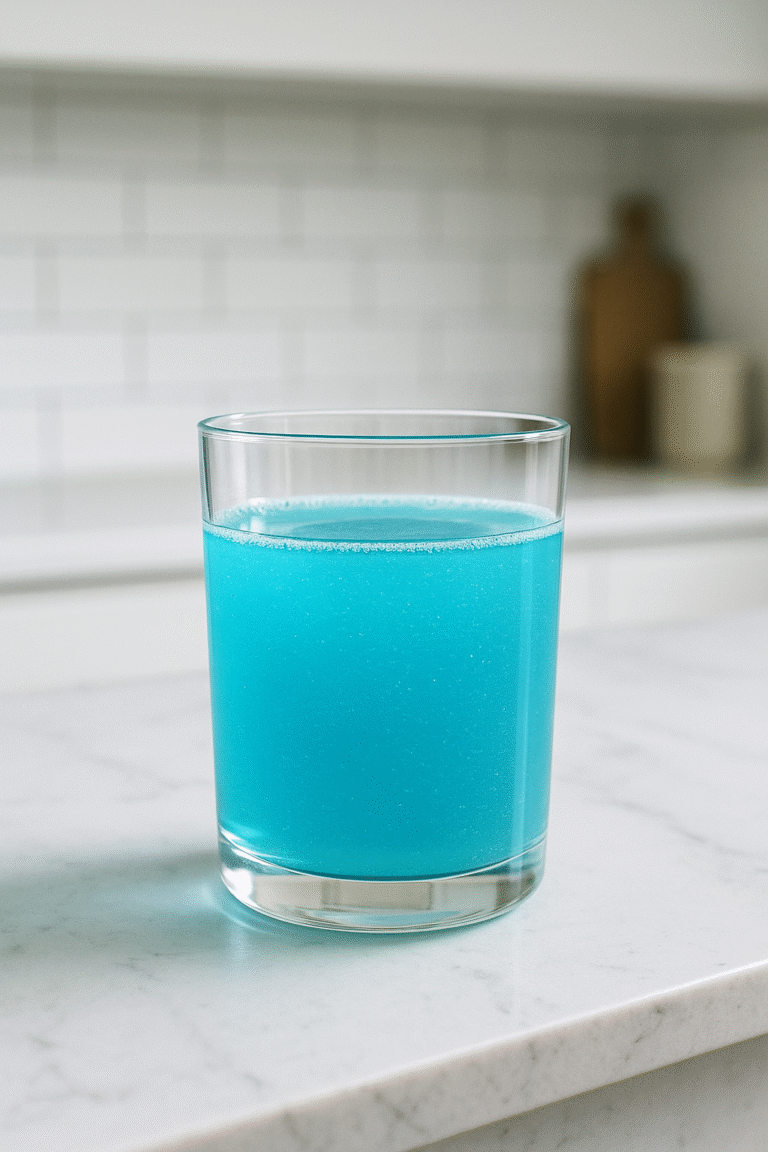
Does The Blue Salt Trick Really Work? Facts, Myths, and Real-Life Results
Does the blue salt trick really work? This simple hydration drink blends natural Persian blue salt and lemon to support the trending salt trick in a safe, refreshing way.
Ingredients
-
1/2 tsp Himalayan salt
-
1/4 tsp blue spirulina powder
-
Juice of 1/2 lemon
-
8–12 oz filtered water
Instructions
Mix all ingredients in a glass. Stir well until fully dissolved. Drink first thing in the morning.

